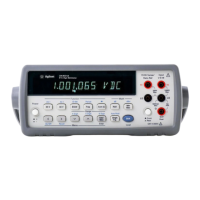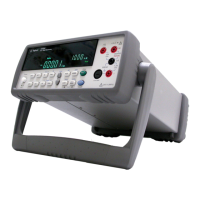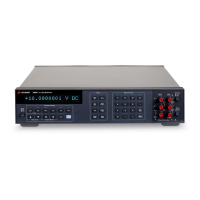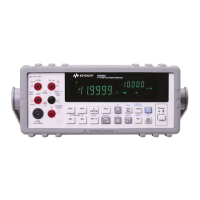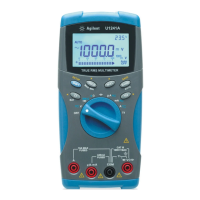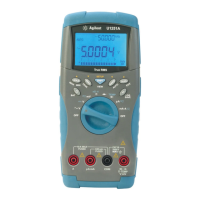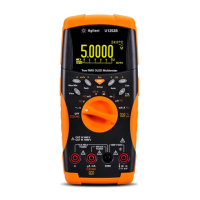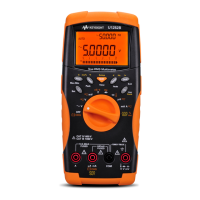84 34410A/11A User’s Guide
2 Features and Functions
Error Conditions
When the front panel ERROR annunciator turns on, one or more
command syntax or hardware errors have been detected. A record of up
to 20 errors can be stored in the instrument’s error queue.
•
The instrument beeps once each time a command syntax or
hardware
error is generated.
• Each remote interface I/O session (e.g., GPIB, USB, LAN) has its own
interface–specific error queue.
•
A special global error queue holds all power–on and hardware–
related
errors (e.g., over–temperature).
•
Errors are retrieved in first–in–first–out (FIFO) order. The first
error
returned is the first error that was stored. Errors are cleared as
you read them. Once you have read all of the interface–specific errors,
the errors in the global queue are retrieved.
•
Errors are cleared as you read them. When you have read all
errors
from the interface–specific and global error queues, the ERROR
annunciator turns off and the errors are cleared.
•
If more than 20 errors have occurred, the last error stored in the
queue
(the most recent error) is replaced with
–350,“Error queue overflow”.
No additional errors are stored until you remove errors from the queue.
If no errors have occurred when you read the error queue, the
instrument responds with
+0,“No error”.
•
The front panel reports errors from all I/O sessions as well as
the
global error queue.
• Both the interface–specific and global error queues are cleared by the
*CLS (Clear Status) command and when power is cycled. The errors
are also cleared when you read the error queue. The error queue is not
cleared by a Factory Reset (*RST) command or an Instrument Preset
(SYSTem:PRESet) command.
Calibration
NOTE
Only service–qualified personnel should calibrate the multimeter. Improper
use of the front–panel CALIBRATION procedure in the UTILITY menu could
result in damage to the multimeter.
Refer to the Agilent 34410A/34411A Service Guide for calibration
procedures.
